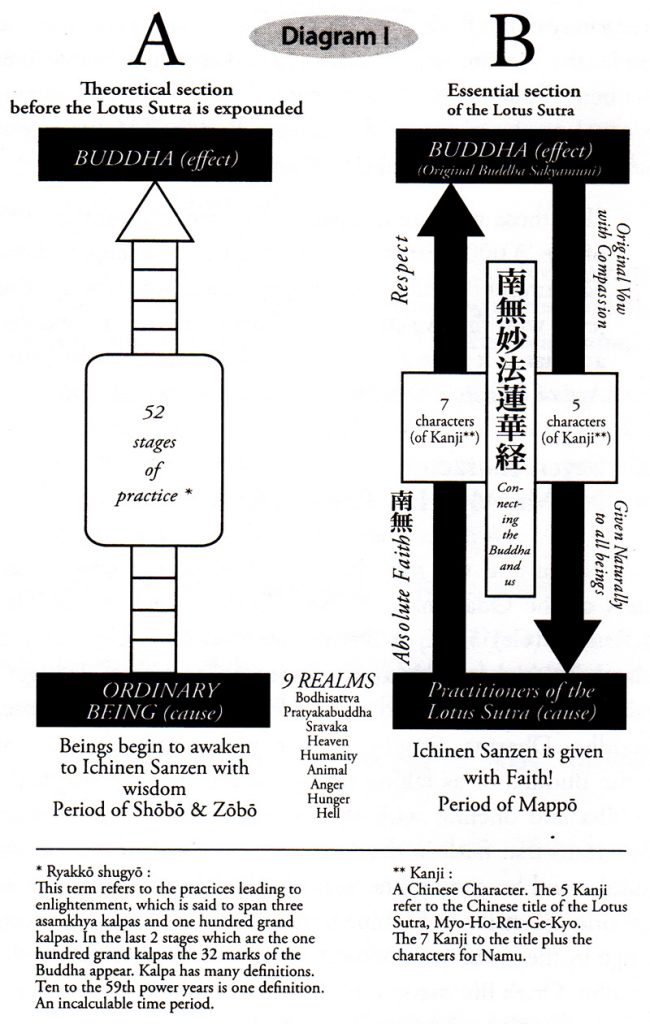As Column B indicates, we merge with the Odaimoku. It is “Namu” or devotion. Then the Odaimoku merges with us. It is Jinen Jōyo, or transferring naturally. It is not awakening to Ichinen Sanzen with one’s own wisdom, but the Buddha’s Ichinen Sanzen is transferred naturally by one’s faith of Namu, devoting oneself to the Buddha’s teaching.
Nichiren Shōnin stated in Kanjin Honzon Shō,
… Śākyamuni Buddha’s merit of practicing the bodhisattva way leading to Buddhahood, as well as that of preaching and saving all living beings since His attainment of Buddhahood are altogether contained in the five words of Myo, Ho, Ren, Ge and Kyo and that consequently, when we uphold the five words, the merits which He accumulated before and after His attainment of Buddhahood are naturally transferred to us.”
(WNS2, p. 146)
He also stated in Kanjin Honzon Shō,
“For those who are incapable of understanding the truth of the ‘3,000 existences contained in one thought,’ Lord Śākyamuni Buddha, with his great compassion, wraps this jewel with the five characters of Myo, Ho, Ren, Ge, and Kyo and hangs it around the neck of the ignorant in the Latter Age of Degeneration.”
(WNS2, p. 164)

